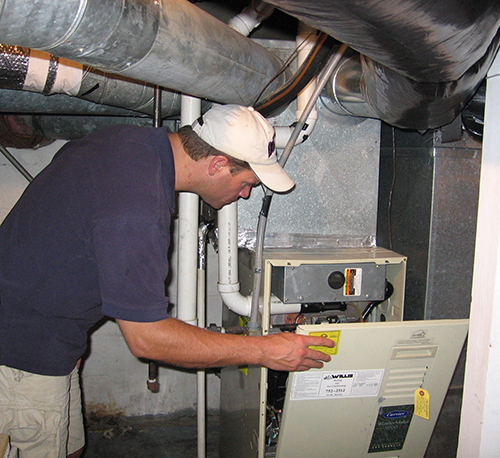Maintain your home’s heating system efficiency
[dropcap]Q:[/dropcap] I want to keep my utility bills as low as possible. With the heating season soon upon us, what can I do myself to keep my heating system running at its maximum efficiency and heat output?
[dropcap]A:[/dropcap] Heating and cooling a home contribute to the majority of utility bills for most families. Water heating usually is the second largest energy consumer, typically accounting for about 20 percent of the utility bill. Doing a simple heating system tune-up yourself improves its efficiency, resulting in significant annual cost savings.
Since central air-conditioning uses the same air handler (blower and ducts) as the heating system, maintaining your heating system for winter often also reduces cooling costs during summer.

Unless your furnace is actually malfunctioning in a significant way or making strange noises, you generally cannot tell if it is operating at peak efficiency. One way to tell is to compare your current utility bills to previous years.
Make sure to compare the actual amount of energy used (KWH, gallons of oil, cubic feet of gas, etc.), not just the dollar amounts of the bills. Adjust the amounts accordingly for the severity of the weather measured in heating degree days for each comparison year (www.degreedays.net).
Don’t skip your regular scheduled professional maintenance calls just because you have done your own heating system mini-tune-up. There are many areas within a heating system that only a qualified technician can evaluate and adjust properly. A rule of thumb when doing your own tune-up is, if you are not absolutely sure what a part or adjustment screw does, don’t touch it.
The first items to check are for safety. With a gas or propane furnace, put several drops of soapy water on any gas-line fittings you find. If the water bubbles at all, there are leaks. Leave your house immediately and call your gas company to have it repaired. With a heat pump, check to make sure the insulation on all of the external wiring looks correct. You can inspect potential ‘bad spots’ – damaged or frayed areas – more carefully once you turn the circuit breaker off.
Turn off the electric power to the heating unit at the circuit breaker panel. Remove its side cover to gain access to the blower. Using a vacuum cleaner brush attachment, clean any dust deposits off the blower. You may find bearing oil cups on the blower motor of older systems. Put a drop of oil in each cup.
If you can find the fan control switch, adjust the temperature setting lower. Common settings are on at 135 degrees and off at 100 degrees. You might try using 110 and 90 degrees. This starts the blower sooner and keeps it running longer as the heat exchanger heats up and then cools down. This may cause a slightly chilly draft when it starts and stops, but it will extract more heat from the system. If you have trouble identifying the fan control switch, call a certified technician and wait for assistance.
Replace the cover and make sure all the cabinet screws are tight. While you have the screwdriver or wrench in your hand, check the tightness of any cabinet screws you can find. Having the cabinet well-sealed improves efficiency by maintaining the proper air flow through the coils or over the heat exchanger surfaces. With a heat pump, also check the cabinet screws on the outdoor condenser unit.
Set up the thermostat so the furnace starts. Hold a stick of lighted incense near all the joints in the ductwork, both return and supply air ducts, to check for air leaks. If you find leaks, wipe dust off the surfaces and use mastic around the leaking joints.
This is a good time to change your furnace filter or clean a central air cleaner element. Consider installing a more effective filter element than the low-cost fiberglass ones that many systems use. This may not help indoor air quality much, but it can keep the air-flow paths cleaner for more efficient heat transfer.
Check the accuracy of the wall thermostat. You may actually be keeping your house warmer than you realize. Tape a bulb thermometer on the wall next to your furnace. Check the thermometer reading when the furnace shuts off and note the difference between it and the thermostat setting. Now you will know where to set the thermostat to get the indoor temperature you desire. If it is inaccurate, replace it with a new electronic setback model.
James Dulley is a nationally syndicated engineering consultant based in Cincinnati.





